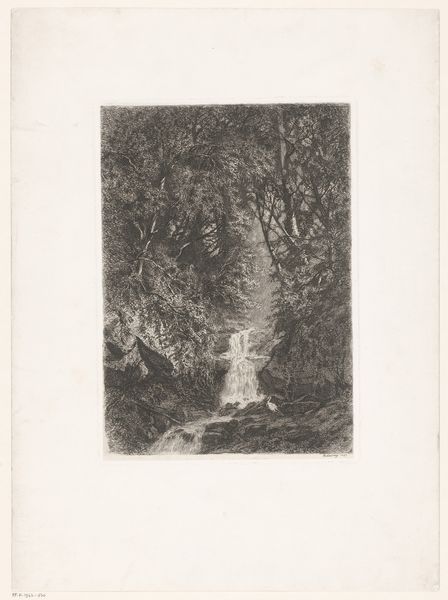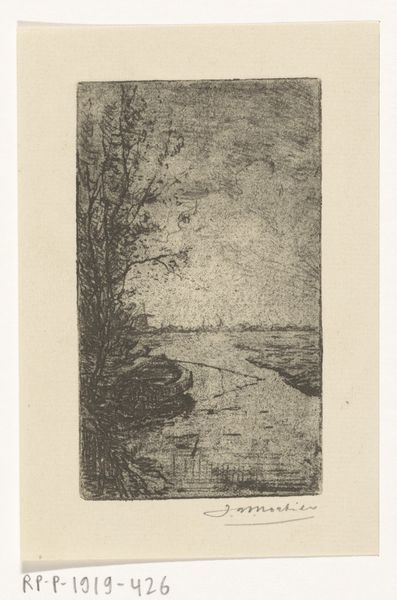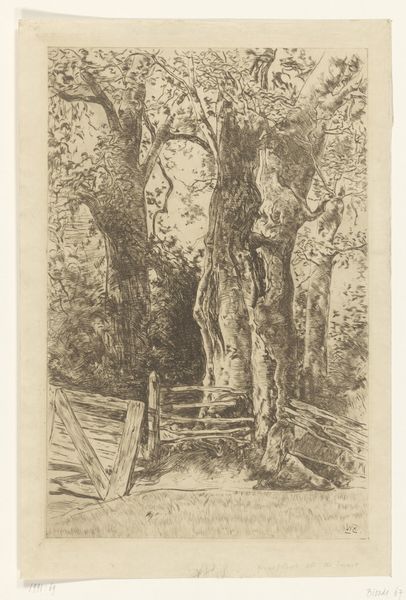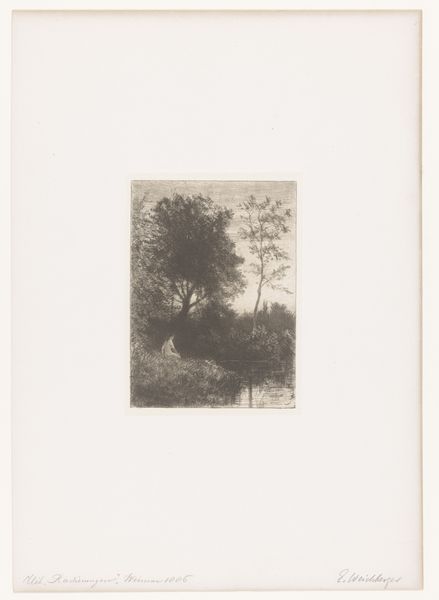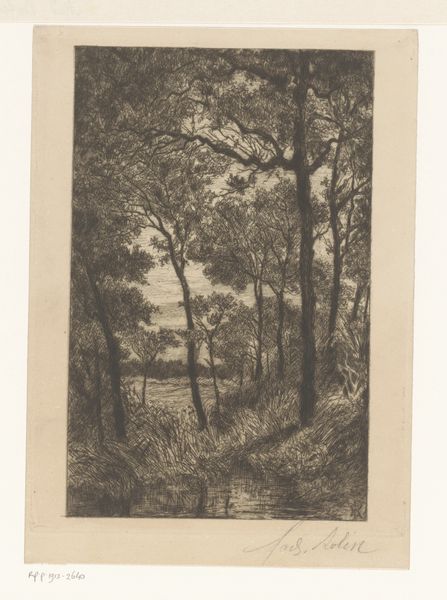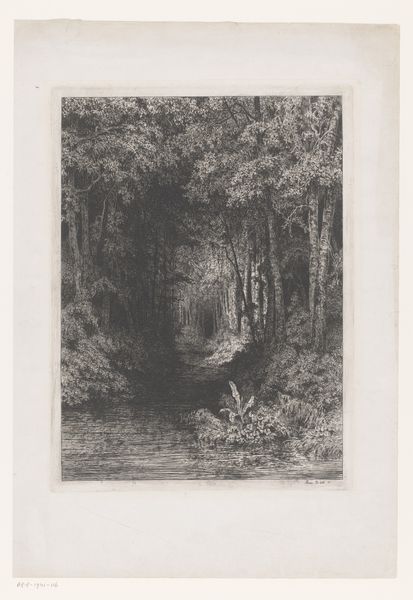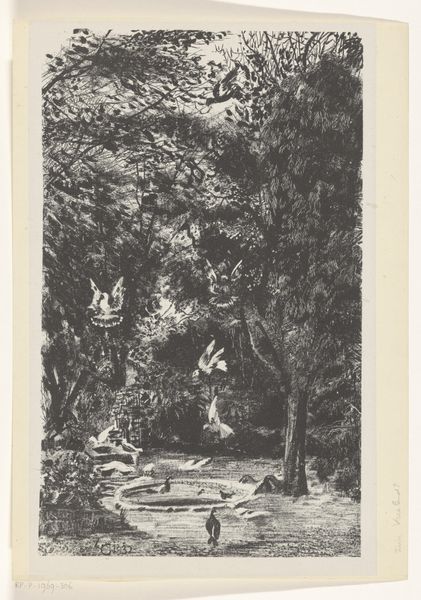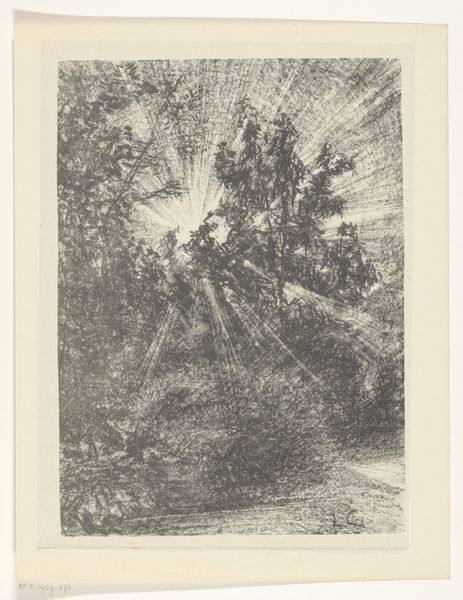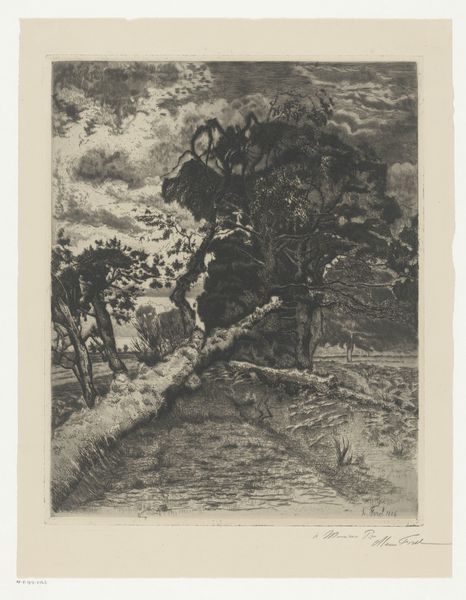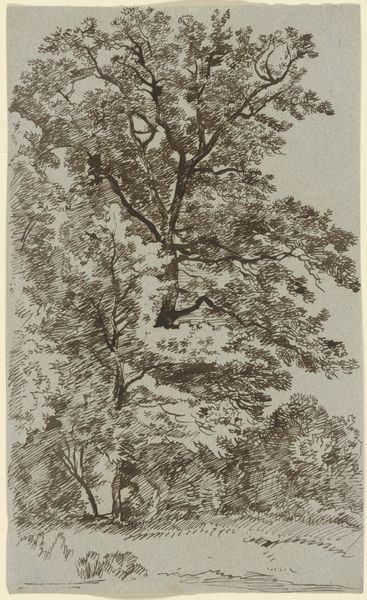
drawing, print, etching, paper, ink
#
drawing
#
garden
# print
#
etching
#
landscape
#
paper
#
form
#
road
#
ink
#
pen-ink sketch
#
line
#
realism
Dimensions: height 328 mm, width 256 mm
Copyright: Rijks Museum: Open Domain
Curator: Welcome. We’re standing before “Tuinpad,” or “Garden Path,” a work by Carel Adolph Lion Cachet, likely created sometime between 1874 and 1945. It is an etching on paper. Editor: My first thought is one of shadowed serenity. The path cuts such a sharp, contrasting line between those dense, dark thickets on either side. Curator: Indeed. The dynamism in the line work is quite striking. Note how the artist uses a variety of hatching and cross-hatching techniques to render a complex, almost palpable sense of depth, giving an impression of deep space with minimalist means. Editor: It’s interesting to consider the historical context. Landscape art has often served ideological purposes – romanticizing nature, claiming territory. This feels very contained though, intimate almost. How does that affect its cultural meaning? Curator: Well, observe that Cachet’s handling of light is highly strategic. The path almost functions as a vanishing point, luring the eye forward with its implied lines, its clean, crisp tones, which seems almost classical. And yet there is also the roughness of execution. Editor: Absolutely. There's a clear tension. Is it a rejection of that established style? Is the medium a deliberate choice for its mass reproducibility in response to artistic or political factors? Etchings became quite democratized. Curator: Perhaps. While its artistic elements denote realism, we must not ignore that prints and drawings at that time acquired increasing circulation due to social movements such as the Arts and Crafts movement and its criticism toward industrialized production. Editor: Thank you for reminding me of that very significant context, one sometimes obscured when looking just at the composition. Curator: It certainly bears contemplation. "Tuinpad" then is not only a study of light and form, but an engagement, albeit understated, with contemporary debates. Editor: I now leave contemplating the intricate dance between the garden path before us and the wider socio-political paths beyond it.
Comments
No comments
Be the first to comment and join the conversation on the ultimate creative platform.

